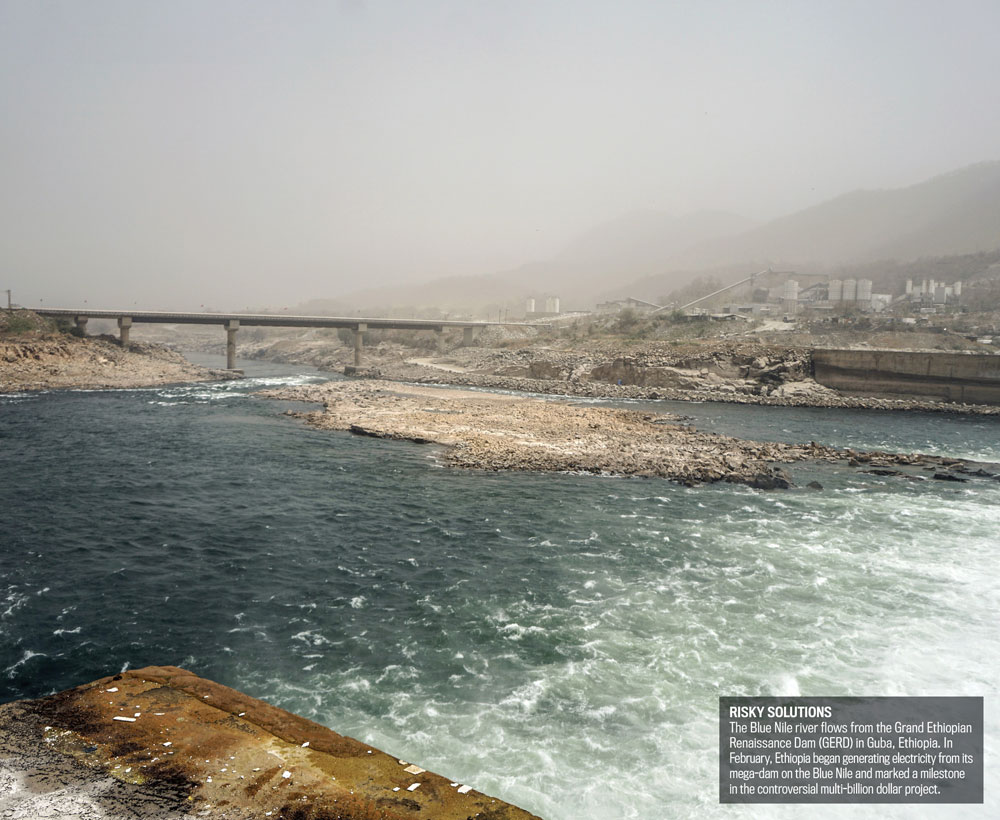GLOBAL PERSPECTIVES
Ethiopia’s Mega-Dam
Ethiopia’s massive hydroelectric dam on a tributary of the Nile has raised regional tensions notably with Sudan and Egypt. The latter depends on the huge river for 97 percent of its water supply.
The third filling of the mega-dam’s reservoir has been completed and that can raise further tensions with the Nile’s downstream neighbours.
With a length of 6,695 kilometres, the Nile competes with the Amazon for the title of world’s longest river. It’s a crucial supplier of water and hydropower in a largely arid region. Its drainage basin of more than three million square kilometres covers 10 countries: Burundi, Democratic Republic of Congo, Egypt, Ethiopia, Kenya, Rwanda, South Sudan, Sudan, Tanzania and Uganda.
The two main tributaries, which are the White Nile and the Blue Nile, converge in Khartoum before flowing north through Egypt and out to the Mediterranean Sea. Around 84 billion cubic metres of water is estimated to flow along the Nile every year.
Ethiopia began construction of the Grand Ethiopian Renaissance Dam (GERD) in 2011. GERD is a 145 metre high structure that straddles the Blue Nile in the Benishangul-Gumuz region of northwestern Ethiopia, roughly 30 kilometres from the border with Sudan.
The US$ 4.2 billion dam will ultimately produce more than 5,000 megawatts of electricity, making it Africa’s biggest hydroelectric dam. It will double Ethiopia’s electricity output.
Ethiopia began the first phase of filling the vast reservoir in mid-2020. The reservoir’s total capacity is 74 billion cubic metres, of which it had reached 22 billion cubic metres in August. The African nation first began generating electricity through GERD in February. Currently, the two operational turbines, out of a total of 13, have a capacity to generate 750 megawatts of electricity.
Egypt, which is an arid nation of nearly 100 million people, depends on the Nile for 97 percent of its water needs including agriculture. Cairo claims a historic right to the river dating from a 1929 treaty between Egypt and Sudan, which was represented by Britain at the time. The treaty gave Egypt veto power over construction projects along the river. A 1959 treaty boosted Egypt’s allocation to around 66 percent of the river’s flow with 22 percent for Sudan.
Ethiopia was not party to those treaties and does not consider them valid.
In 2010, Nile basin countries excluding Egypt and Sudan, signed another deal known as the Cooperative Framework Agreement, which allows projects on the river without Cairo’s consent.
Ethiopia, which was one of Africa’s fastest growing economies in recent years until war broke out in November 2020, insists the dam will not affect the onward flow of water. But Egypt fears its supplies will be reduced during the time it takes to fill the reservoir.
Egypt considers the dam an existential threat and Sudan has warned that millions of lives would be at “great risk” if Ethiopia unilaterally filled the dam.
Talks sponsored by the African Union have failed to yield a three-way agreement on the dam’s filling and operations.





